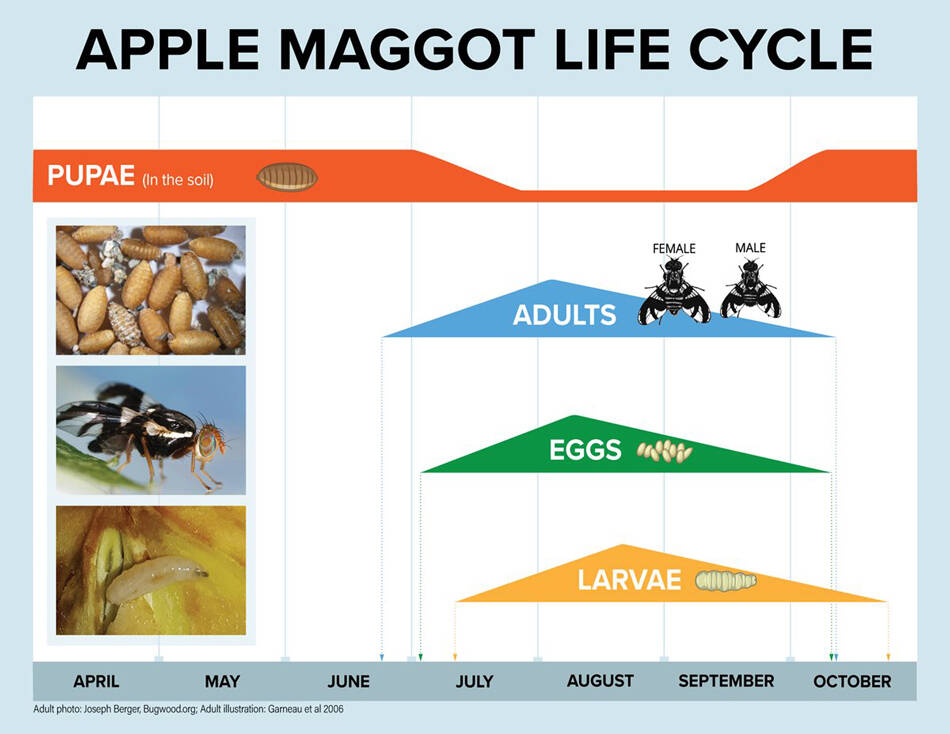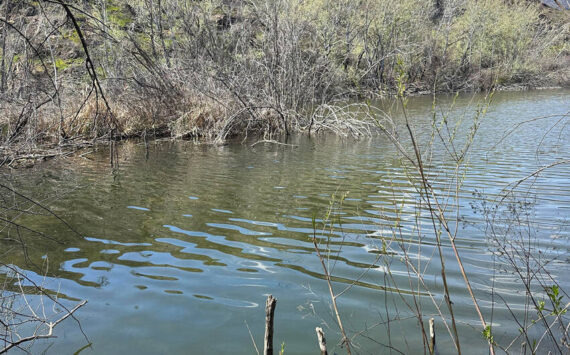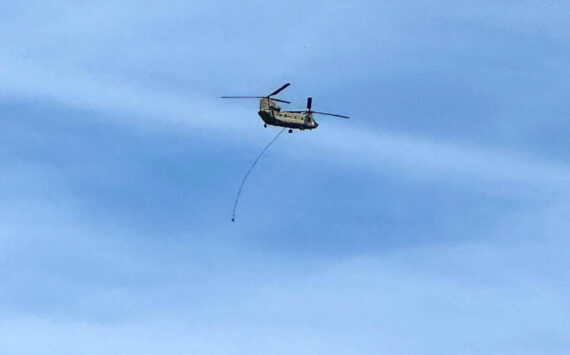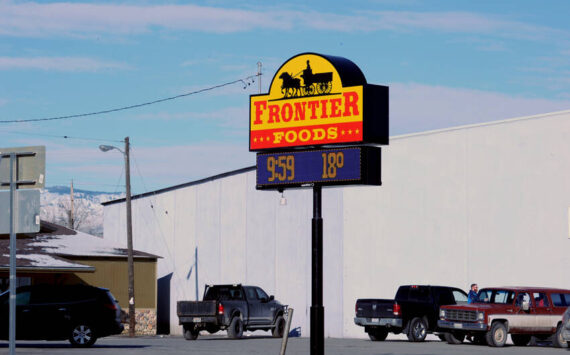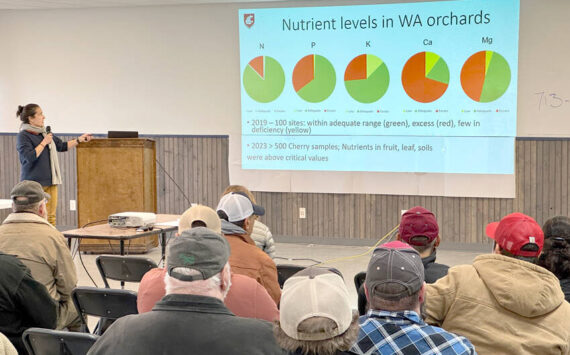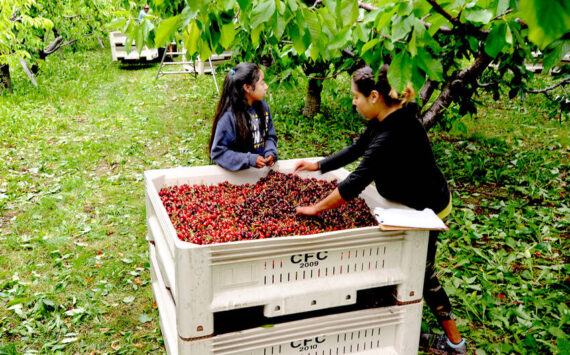OKANOGAN — While at one point all of Okanogan County was under consideration for an apple maggot quarantine, it now looks like only a small section of the valley, between Ellisforde and Oroville, will fall under the quarantine if approved.
The Washington State Department of Agriculture (WSDA) determined there were areas of the county that show signs of the Apple Maggot Fruit Fly in Okanogan County in 2017. At that time, the agreed-on quarantine was limited to an area in the Methow Valley, north of Gold Creek. In 2020, due to more WSDA surveys looking for the fly and larva by setting out traps, it was believed all the county might need to be quarantined.
“The apple maggot (fruit fly) is an invasive insect pest native to Eastern North America. Its hosts include apples, crabapple and native and ornamental hawthorn. During the larval stage, apple maggot can cause extensive damage to fruit, decreasing crop yields and making the fruit unfit for human consumption. It is also economically significant to the Washington apple industry, as fruit from the pest-free area has greater access to international markets,” wrote the WSDA at that time.
The Tri-County Pest Control Board has suggested an area between SR97 and County Hwy. 7 from the Ellisforde Bridge Road over the Okanogan River to the 12th Street Bridge in Oroville as to where the quarantine might be applied, according to Will Carpenter with the Tri-County Pest Control Board. The board covers Chelan, Douglas and Okanogan counties.
“Basically, after 2020 Okanogan County qualified for some type of additional apple maggot quarantine. At that time, it was proposed to quarantine the entire county, which we were able to get tabled at the Apple Maggot Working Group meeting that winter until Okanogan County figured out what the task force structure was going to look like,” said Carpenter.
Carpenter said the Tri-County Pest Control Board was able to clean up some of the sites in Okanogan County that were of concern.
“Instead of having this whole county quarantined we were able to see if we could kind of minimize the impact of that. So, after 2021 the one site that was to the south by Malott was all cleaned up and then a couple of the spots in the Ellisforde area had been cleaned up. Then there were still a couple more spots of concern down on the river. So, through 2022 the task force itself continued its work cleaning up sites and WSDA continued doing their surveys for apple maggots, adult flies and larvae. When they find the larva, that is part is the triggering mechanism… that’s where you get the two life stages,” said Carpenter.
He went on to say that the task force started looking at the northern part of the county to determine where they could and could not do work to remove host material and address the apple maggot.
“And, it’s pretty apparent that there is quite an abundance of hawthorn that’s growing up between Ellisforde and Oroville along the riparian zone along the river on all those oxbows. There’s just not enough funding, not enough personnel and not enough availability in policies of the different agencies involved to remove something of that scope. That’s when you start talking quarantine,” said Carpenter.
He said at that time the county had already met the quarantine triggers.
“So, in a nutshell, basically in 2020 you started with it… the whole county quarantined. In 2021 you’re looking at Tonasket north. Then after 2022, we were able to isolate what a quarantine would look like down to something that’s going to be something like from Ellisforde Bridge Road up to the bridge in Oroville that connects Hwy. 97 and Hwy. 7. This little polygon is just on the river where you use the two highways as your boundaries. Those are just preliminary options right now, there is no quarantine that’s been established yet.”
Carpenter said all that has happened is the fruit industry has evaluated the information and the data and proposed the quarantine option.
“We said that if we have to quarantine, we are comfortable with something that looks like this,” he said. “But nothing has been set in stone. The process hasn’t even started yet.”
Carpenter met with the Okanogan County Commissioners to talk about the issue earlier this month.
“I know there were some questions about where we’re at, what part of the process has already happened. I think the most important thing to know is that WSDA has not started its quarantining process yet.
“We’ve done all the preliminary work; they have all the data showing this is where it’s established. WSDA is showing this apple maggot problem is going to be established along the river. These are going to places you can’t get into and remove the host material for obvious reasons of it being inside the river. Right now, it is in standing water, we have vegetation you just can’t remove without replacing it. And, if you did, the scale is just so great there’s not enough money or manpower to do something like that, let alone the permitting issues you’d run into,” Carpenter said.
He said when a quarantine is established it means different things for different people within the zone.
“For growers, it means they must be inspected before moving any fruit outside of the quarantine. Then that fruit must go through a cold treatment before it can ever be shipped overseas for sale. Those are of pretty economic importance because you’re going to put this stuff into cold treatment where it has to stay for 90 days. You bring those warehouse temperatures down to that temperature first and then it must stay there for 90 days,” adding that more time is needed to bring the temps down before the 90-day countdown begins.
“You just can’t flash freeze the apples; it takes time. Then you might be looking at selling by the middle of March,” he said.
The next group of people it affects, according to Carpenter, are those that have their own backyard apple trees and crabapples.
“You’re not supposed to transport homegrown fruit over quarantine. So, everything is going to have to stay in. Your yard clippings, all that sort of stuff, must stay within the quarantine,” said Carpenter, adding that the homeowner will have to spray their trees.
Carpenter’s department enforces for horticultural pests and diseases that aren’t being managed.
“If we get a report of a tree with an issue let’s say, we will work with the owner to get that cleaned up, get them on some spray programs, etc. and make sure they’re not a problem. If we get difficult owners that don’t want to take care of their fruit trees and just let the disease spread or the pests build up the population and spread, then we will go through our enforcement policies which can lead all the way up to Superior Court. It usually doesn’t get that far but it is the state law to take care of your fruit trees. They are the laws we are here to enforce. We are not just out there inspecting everybody’s backyard trees, but if we get a report, we will go out there and look. Or, if we are looking at one site and next door there’s an equally bad site we will talk to the owners.”
Carpenter said the high-risk homegrown fruit trees in the county are apples, cherries and pears because those are the biggest fruit crops being produced commercially and represent a large part of the local economy.
Carpenter can be reached at 509-667-6677 and information on the Tri-County Pest Control Board and what they do can be found at www.co.chelan.wa.us/horticultural-pest-and-disease-board.
More information from the WSDA on apple maggots can be found at agr.wa.gov/applemaggot.
